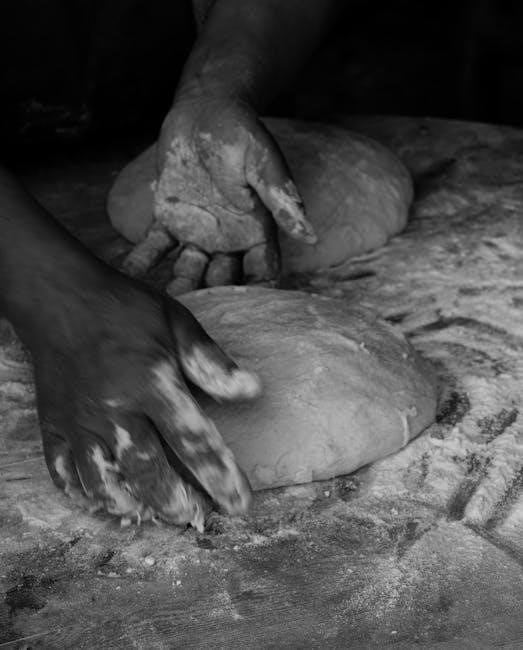
atosa freezer manual
Atosa Freezer Manual: A Comprehensive Guide
Navigating the world of commercial refrigeration can be challenging.
This comprehensive guide simplifies accessing and understanding your
Atosa freezer manual. From finding the right document online, to
understanding key features and troubleshooting, we’ll equip you with
the knowledge for optimal freezer operation.
Finding Your Atosa Freezer Manual
Locating the correct manual for your Atosa freezer is the first step
towards efficient operation and maintenance. Whether you’re dealing
with an MBF8002, MBF8503, MCF8703, or MWF9007 model, having the
right documentation is crucial. Atosa’s website offers a range of
manuals for their refrigeration equipment, including worktop
refrigerators and freezers. ManualsLib and Manuals.Plus are also
valuable resources for finding Atosa PDF user manuals, service
manuals, and operating guides. These platforms often host a wide
selection of manuals, making it easier to find the specific document
you need. When searching online, be sure to include the exact model
number of your freezer to ensure you download the correct manual.
Remember, proper temperature control is vital for food safety and
equipment longevity, and the manual provides detailed instructions.
Atosa Manuals Online: ManualsLib and Manuals.Plus
When searching for your Atosa freezer manual online, ManualsLib and
Manuals.Plus are excellent starting points. ManualsLib boasts a
vast collection of over 376 Atosa PDF user manuals, service manuals,
and operating guides, covering various product categories such as
commercial food equipment, refrigerators, and freezers. You can
easily navigate their website to find the specific manual for your
Atosa model. Manuals.Plus is another user-friendly platform that
simplifies the process of finding instruction manuals and user guides.
Their mission is to provide comprehensive and accessible manuals for a
wide range of products, including Atosa freezers. These online
resources offer convenient access to the information you need to
understand and maintain your Atosa freezer, ensuring optimal
performance and longevity. Be sure to utilize the search function on
these sites and include your specific model number.
Downloading Atosa Freezer PDF Manuals
Once you’ve located the correct manual for your Atosa freezer on
platforms like ManualsLib or the Atosa website, downloading it as a
PDF is a straightforward process. Typically, you’ll find a download
link or button prominently displayed near the manual’s preview.
Clicking this link will initiate the download, saving the manual to
your computer or device; PDF format ensures that the manual can be
easily viewed and printed on various devices without formatting
issues. Having a digital copy of your Atosa freezer manual allows you
to access it anytime, anywhere, whether you’re troubleshooting an
issue in the kitchen or reviewing maintenance procedures. Remember to
save the downloaded PDF in a convenient location on your device for
easy retrieval. Always verify that the downloaded manual corresponds
to your exact Atosa freezer model to ensure accurate information and
guidance. Furthermore, keep a backup copy of the PDF in case of
accidental deletion.

Understanding Your Atosa Freezer Model
To effectively operate and maintain your Atosa freezer, it’s crucial
to understand your specific model. Each model boasts unique features
and specifications. Identifying your model is the first step towards
accessing tailored information and optimal performance.
Common Atosa Freezer Models: MBF8002, MBF8503, MCF8703, MWF9007
Atosa offers a diverse range of freezers tailored for various commercial
needs. Among the popular models, the MBF8002 stands out as a reach-in
freezer, often chosen for its spacious interior with three shelves per
section, maximizing food storage.
The MBF8503 is another frequently encountered model, with manuals
and wiring diagrams readily available. It appears in both wiring and
service manuals. The MCF8703, known for its convenient features like
adjustable shelves and interior lighting, provides reliable freezing
capabilities.
Finally, the MWF9007, a solid top chest freezer, is designed for
efficient storage and ease of use. These models represent just a
fraction of Atosa’s extensive freezer lineup, each engineered to
meet specific requirements in commercial kitchen environments. Consulting
the respective manual is crucial for optimal usage and maintenance.
Key Features and Specifications
Understanding the key features and specifications of your Atosa freezer
is essential for optimal performance and longevity. These units often
boast stainless steel exteriors and interiors, offering durability and
ease of cleaning, crucial in commercial settings. Environmentally
friendly R290 refrigerant is commonly used, contributing to energy
efficiency.
Electronic temperature controllers ensure precise temperature management,
typically maintaining temperatures between -8°F and 0°F. Recessed door
handles and self-closing doors with a stay-open feature add convenience
and efficiency. Magnetic door gaskets provide a tight seal, preventing
temperature fluctuations. Adjustable shelves allow for flexible storage
configurations.

Specific models like the MBF8002 may have varying dimensions and
electrical requirements, so consulting the model’s manual is crucial.
Features such as automatic defrost, interior lighting, and digital
displays further enhance usability. Detailed specifications, including
BTU ratings and compressor horsepower, are available in the product
manual or spec sheets.

Operating Your Atosa Freezer
Proper operation is key to maximizing the efficiency and lifespan of
your Atosa freezer. This section covers essential aspects such as initial
setup, temperature control, and defrosting procedures, ensuring safe
and effective usage.
Initial Setup and Installation
Before operating your Atosa freezer, proper setup and installation are crucial.
First, ensure the freezer is placed on a level surface, providing stability and
optimal performance. Adequate ventilation is essential; allow sufficient space
around the unit for proper airflow, preventing overheating and maintaining
consistent temperatures.
Next, connect the freezer to a dedicated electrical circuit that meets the
specifications outlined in your Atosa freezer manual. This ensures safe and
reliable operation. After connecting the freezer, allow it to run for at least
four hours continuously before loading any food items. This initial run-time
allows the freezer to reach the proper temperature for safe food storage.
Refer to your specific model’s manual for detailed instructions on initial
start-up procedures, including temperature settings and any specific
recommendations from Atosa. Consulting the manual will help you avoid common
mistakes and ensure your freezer operates efficiently from the start. Remember,
correct installation is vital for the longevity and performance of your Atosa
freezer.
Temperature Control and Settings
Maintaining the correct temperature in your Atosa freezer is paramount for food
safety and preservation. Typically, Atosa freezers are designed to maintain
temperatures between -8°F and 0°F (-22°C and -18°C). Precise temperature
control is achieved through an electronic temperature controller, allowing you
to adjust settings according to your specific needs.
To adjust the temperature, consult your Atosa freezer manual for the specific
model. The manual will guide you through the controller interface, explaining
how to increase or decrease the temperature setting. It’s crucial to monitor
the freezer’s temperature regularly using an accurate thermometer to ensure it
aligns with your set point. Fluctuations can indicate potential issues.
Proper temperature management not only ensures food safety but also contributes
to the efficiency of your freezer. Overly low temperatures waste energy, while
temperatures that are too high can compromise food quality. Refer to your
Atosa freezer manual for recommended temperature ranges for different types of
food items and adjust your settings accordingly. Regularly checking and
adjusting settings ensures optimal performance.
Defrosting Procedures: Manual and Automatic
Atosa freezers may feature either manual or automatic defrosting systems, each
requiring distinct procedures. Understanding which type your freezer uses is
crucial for effective maintenance. Manual defrosting involves manually
removing ice buildup, while automatic defrosting cycles melt ice automatically.
For manual defrosting, first, disconnect the freezer from the power supply.
Remove all contents and store them in a cold place. Allow the ice to melt
naturally or expedite the process by placing pans of hot water inside. Once
defrosted, clean the interior thoroughly and reconnect the power. Refer to your
Atosa freezer manual for specific instructions.
Automatic defrosting systems, conversely, initiate defrost cycles periodically.
These cycles melt frost buildup, which then drains away. If your Atosa freezer
has this feature, consult the manual for adjusting the frequency and duration
of defrost cycles. If excessive ice buildup occurs in automatic models, it
could indicate a malfunction. The manual will provide troubleshooting steps,
such as checking the defrost timer or heating element. Proper defrosting,
whether manual or automatic, is essential for optimal performance.

Maintenance and Troubleshooting
Maintaining your Atosa freezer and promptly addressing any issues are
crucial for its longevity and optimal performance. Regular cleaning,
preventative maintenance, and effective troubleshooting can minimize
downtime and ensure food safety.
Cleaning and Preventative Maintenance
Regular cleaning and preventative maintenance are vital for the
efficient operation and longevity of your Atosa freezer. Begin by
unplugging the unit to ensure safety. Remove all contents before
starting the cleaning process. Wipe down the interior and exterior
surfaces with a mild detergent and warm water solution. Avoid harsh
chemicals or abrasive cleaners, as these can damage the stainless steel
finish.
Pay close attention to door seals, ensuring they are clean and free from
debris to maintain a proper seal. Clean the condenser coils regularly,
typically every three months, to optimize cooling efficiency; A vacuum
cleaner with a brush attachment can be used to remove dust and dirt.
Check the temperature settings periodically to ensure they are accurate
and adjust as needed.
Inspect the power cord for any signs of damage and replace if necessary.
Address any minor issues promptly to prevent them from escalating into
major repairs. By following these cleaning and preventative maintenance
procedures, you can extend the life of your Atosa freezer and maintain
its performance.
Troubleshooting Common Issues
When your Atosa freezer encounters problems, prompt troubleshooting can
minimize downtime and prevent further damage. One common issue is
inadequate cooling. First, verify that the unit is properly plugged in
and the power switch is on. Check the temperature settings to ensure they
are correctly configured; Inspect the condenser coils for dust or debris,
as dirty coils can impede cooling efficiency.
Another frequent problem is excessive frost buildup. Ensure that the door
seals are clean and intact, as gaps can allow warm air to enter, leading
to frost formation. If the freezer is equipped with an automatic defrost
system, confirm that it is functioning correctly. A manual defrost may
be necessary if the automatic system fails.
Unusual noises, such as loud humming or rattling, can indicate mechanical
problems. Check the compressor and fan motors for any obstructions or
damage. If the issue persists, consult the Atosa freezer manual for
specific troubleshooting steps or contact a qualified technician.
Remember to always disconnect the power supply before attempting any
repairs.
Finding Replacement Parts: Parts Town and Nash Restaurant Equipment LLC (NRE)
When your Atosa freezer requires replacement parts, sourcing genuine OEM
(Original Equipment Manufacturer) components is crucial for ensuring
optimal performance and longevity. Two reputable suppliers of Atosa
freezer parts are Parts Town and Nash Restaurant Equipment LLC (NRE).
Parts Town boasts a vast inventory of in-stock Atosa parts, offering
same-day shipping for urgent repairs. Their website provides detailed
product listings and compatibility information to help you identify the
correct part for your specific freezer model.
Nash Restaurant Equipment LLC (NRE) is another reliable source for Atosa
parts, specializing in service manuals, spec sheets, and parts breakdowns.
Their expertise can be invaluable when diagnosing complex issues and
locating the necessary components.
Before ordering any replacement part, consult your Atosa freezer manual
to verify the part number and ensure compatibility. Using the correct
parts will help maintain the freezer’s efficiency and prevent further
damage. Always prioritize quality and reliability when selecting a
supplier for Atosa freezer replacement parts.